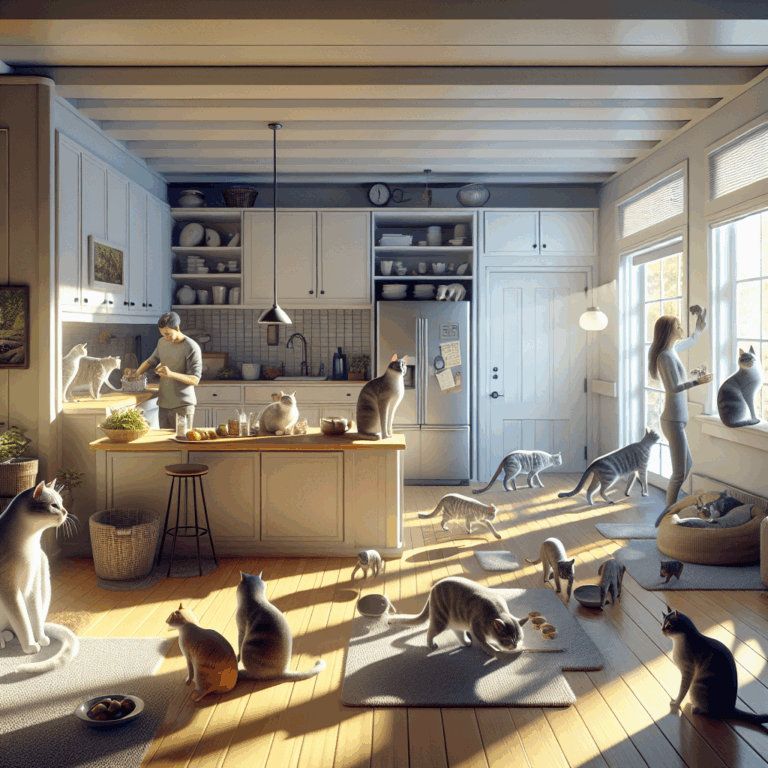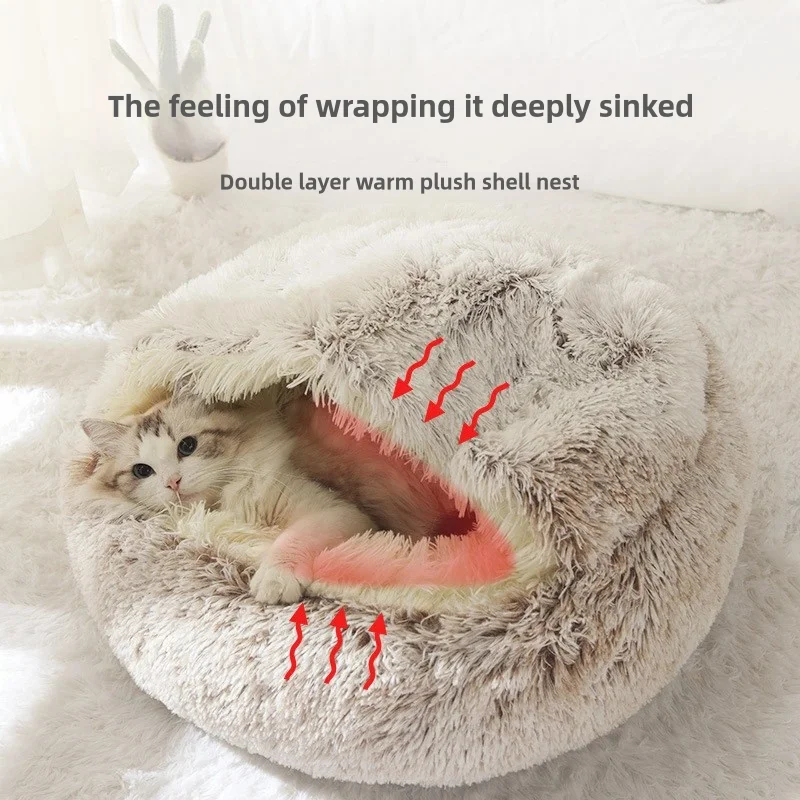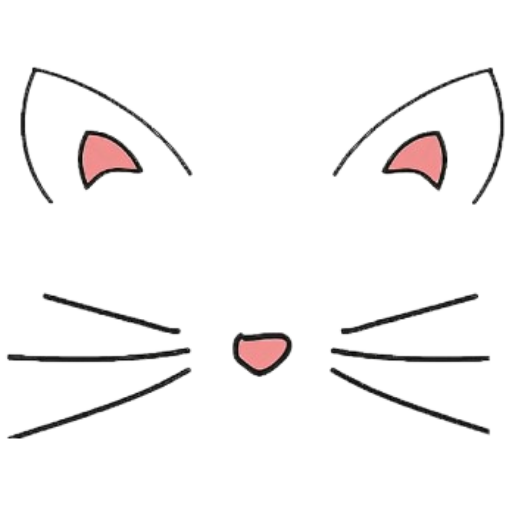Feline Architects: How Cats Shape Our Homes and Lives
In the world of interior design and home living, the influence of our feline companions is more profound than one might initially consider. As the relationship between humans and cats continues to evolve, a subtle yet significant transformation is taking place within our living spaces, driven largely by the needs and behaviors of these enigmatic creatures. From the layout of furniture to the materials chosen for decor, cats have become unwitting architects of our homes, shaping them in ways that cater to their unique lifestyles.
Cats, with their natural predilection for climbing and exploring, have inspired a new wave of vertical living aesthetics. Home designers and cat owners alike are increasingly incorporating vertical spaces, such as cat trees and wall-mounted climbing shelves, into their interiors. This not only serves the practical purpose of providing exercise and stimulation for cats but also creates a dynamic visual element that can add depth and interest to a room. Such innovations showcase how the integration of feline-friendly designs can enhance both the functionality and aesthetic appeal of a home environment.
Moreover, the choice of materials in home decor is often influenced by the presence of cats. Fabrics and surfaces that are durable and resistant to scratching and shedding are in high demand. This has led to an increase in the popularity of materials like microfiber and leather, which not only withstand the rigors of cat activity but also add a touch of sophistication to home interiors. Similarly, the placement of furniture is often dictated by a cat’s need for strategic vantage points, with many owners ensuring that their furry friends have access to window sills, sofa backs, and other elevated spots that offer a panoramic view of their domain.
In addition to interior design, cats have also impacted the development of smart home technology. Devices such as automated feeders, self-cleaning litter boxes, and pet cameras are becoming standard fixtures in modern homes, reflecting a shift towards more convenient and efficient pet care solutions. These advancements not only improve the quality of life for cats but also offer peace of mind to owners, allowing them to monitor and interact with their pets even from afar.
The presence of a cat in the home also fosters a unique sense of community among neighbors and friends. Cat owners often find themselves forming connections with others who share their love for these animals, leading to the creation of social networks and support systems. This communal aspect of cat ownership highlights the broader societal impact of these beloved pets, as they bring people together and promote a sense of belonging and camaraderie.
As we continue to adapt our homes to accommodate the needs of our feline companions, we are reminded of the deep bond that exists between humans and cats. This symbiotic relationship not only enriches our lives but also challenges us to rethink and reimagine the spaces we inhabit. In doing so, we learn to appreciate the subtle yet profound ways in which cats influence our daily lives, guiding us toward a more harmonious and fulfilling coexistence.

In the world of interior design and home living, the influence of our feline companions is more profound than one might initially consider. As the relationship between humans and cats continues to evolve, a subtle yet significant transformation is taking place within our living spaces, driven largely by the needs and behaviors of these enigmatic creatures. From the layout of furniture to the materials chosen for decor, cats have become unwitting architects of our homes, shaping them in ways that cater to their unique lifestyles.
Cats, with their natural predilection for climbing and exploring, have inspired a new wave of vertical living aesthetics. Home designers and cat owners alike are increasingly incorporating vertical spaces, such as cat trees and wall-mounted climbing shelves, into their interiors. This not only serves the practical purpose of providing exercise and stimulation for cats but also creates a dynamic visual element that can add depth and interest to a room. Such innovations showcase how the integration of feline-friendly designs can enhance both the functionality and aesthetic appeal of a home environment.
Moreover, the choice of materials in home decor is often influenced by the presence of cats. Fabrics and surfaces that are durable and resistant to scratching and shedding are in high demand. This has led to an increase in the popularity of materials like microfiber and leather, which not only withstand the rigors of cat activity but also add a touch of sophistication to home interiors. Similarly, the placement of furniture is often dictated by a cat’s need for strategic vantage points, with many owners ensuring that their furry friends have access to window sills, sofa backs, and other elevated spots that offer a panoramic view of their domain.
In addition to interior design, cats have also impacted the development of smart home technology. Devices such as automated feeders, self-cleaning litter boxes, and pet cameras are becoming standard fixtures in modern homes, reflecting a shift towards more convenient and efficient pet care solutions. These advancements not only improve the quality of life for cats but also offer peace of mind to owners, allowing them to monitor and interact with their pets even from afar.
The presence of a cat in the home also fosters a unique sense of community among neighbors and friends. Cat owners often find themselves forming connections with others who share their love for these animals, leading to the creation of social networks and support systems. This communal aspect of cat ownership highlights the broader societal impact of these beloved pets, as they bring people together and promote a sense of belonging and camaraderie.
As we continue to adapt our homes to accommodate the needs of our feline companions, we are reminded of the deep bond that exists between humans and cats. This symbiotic relationship not only enriches our lives but also challenges us to rethink and reimagine the spaces we inhabit. In doing so, we learn to appreciate the subtle yet profound ways in which cats influence our daily lives, guiding us toward a more harmonious and fulfilling coexistence.



13 thoughts on “Feline Architects: How Cats Shape Our Homes and Lives”
Cats truly inspire creativity in home design, blending functionality with aesthetic appeal to create harmonious living spaces.
This post beautifully highlights the unique ways our feline friends enhance and transform our living spaces.
This post provides an interesting perspective on how cats can influence home design and lifestyle choices.
This post wonderfully highlights the unique ways cats influence and enrich our home environments.
I appreciate your perspective on how the article captures the unique influence of cats in our homes. It’s fascinating to see how their presence can shape our living spaces in such creative and meaningful ways.
This post offers an insightful look at the ways in which our homes and lifestyles adapt to accommodate the unique needs of cats.
This post beautifully highlights the unique ways cats influence our living spaces and foster a sense of community.
Cats certainly influence home design, but attributing architectural impact to them might be overstating their role.
It’s fascinating to see how the presence of cats can inspire creative and functional changes in our living spaces.
What a fascinating exploration of how our furry companions influence both the design and atmosphere of our living spaces!
Indeed, it’s amazing to see how our pets shape our homes in both practical and aesthetic ways. Their presence truly enhances our living environments.
Absolutely, it’s fascinating how pets influence our spaces. Their impact definitely adds both functionality and beauty to our homes.
This post beautifully highlights the creative ways our furry friends enhance and enrich our living spaces.
Comments are closed.